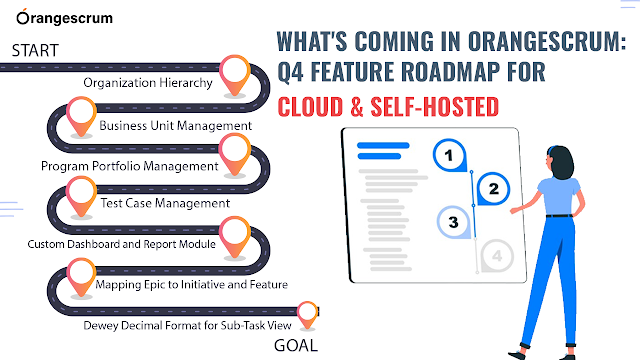In the dynamic landscape of software development, where a
multitude of voices shape the trajectory of projects, creating effective
stakeholder communication plans is paramount.
A well-crafted communication plan not only facilitates the
seamless exchange of information but also ensures that the produced content,
including blogs, articles, social media, and web materials, aligns with the
diverse perspectives of stakeholders.
This introduction delves into the significance of developing
communication strategies that resonate with the target audience and enhance
project outcomes.
Understanding the Role of
Stakeholder Communication Plans
Before diving into the mechanics of crafting an effective
stakeholder communication plan, let's examine why they are so crucial:
1. Clarity and Consistency: Effective communication
plans ensure that stakeholders receive clear, consistent, and timely
information about the project. This minimizes misunderstandings and confusion,
keeping everyone on the same page.
2. Engagement and Buy-In: Regular and meaningful
communication fosters stakeholder engagement and buy-in. When stakeholders feel
involved and informed, they are more likely to support the project and provide
valuable input.
3. Issue Resolution: A well-crafted
communication plan includes mechanisms for addressing stakeholder concerns and
issues promptly. This proactive approach prevents problems from escalating and
derailing the project.
4. Risk Mitigation: Effective communication
helps identify potential risks early, allowing project teams to mitigate them
before they become significant obstacles
5. Resource Optimization: By tailoring
communication to the needs of specific stakeholder groups, communication plans
optimize resource allocation. This ensures that efforts are focused where they
matter most.
Components of an Effective Stakeholder Communication Plan
Creating an effective stakeholder communication plan involves
several key components:
1. Stakeholder Identification: Begin by identifying all
potential stakeholders. Categorize them into primary (high influence and
interest), secondary (high influence or interest), and tertiary (low influence
and interest) groups.
2. Communication
Objectives: Clearly define the objectives of your communication plan. What
do you aim to achieve through stakeholder communication? Whether it's
disseminating project updates, addressing concerns, or seeking feedback,
setting clear goals is essential.
3. Message Development: Craft tailored messages
for each stakeholder group. Messages should be clear, concise, and relevant to
the recipients' interests and needs.
4. Communication
Channels: Determine the most effective communication channels for reaching
each stakeholder group. This could include emails, meetings, reports, project
management software, or even social media platforms.
5. Frequency and Timing: Specify how often
communication will occur and the timing of updates. Different stakeholder
groups may require different communication frequencies.
6. Responsibilities: Clearly outline who is
responsible for communicating with each stakeholder group. Designate roles and
responsibilities to ensure accountability.
7. Feedback Mechanisms: Incorporate mechanisms
for stakeholders to provide feedback or seek clarification. This encourages
two-way communication and engagement.
8. Issue Escalation: Establish procedures for
addressing issues or concerns raised by stakeholders. Define the chain of
command and responsibilities for resolving disputes or problems.
9. Monitoring and
Evaluation: Regularly assess the effectiveness of your communication plan.
Are stakeholders receiving and understanding the information? Adjust your plan
as needed to improve outcomes.
Crafting Your Stakeholder Communication Plan
To create an effective stakeholder communication plan, follow
these steps:
1. Identify Stakeholders: List all potential
stakeholders, considering their interests and influence on the project.
2. Prioritize
Stakeholders: Categorize stakeholders into primary, secondary, and tertiary
groups based on their significance.
3. Set Communication
Objectives: Clearly define what you want to achieve through stakeholder
communication.
4. Craft Messages: Develop tailored
messages that resonate with each stakeholder group.
5. Select Communication
Channels: Choose appropriate channels for delivering messages to each
group.
6. Determine Frequency and
Timing: Specify how often and when communication will occur.
7. Assign
Responsibilities: Define who is responsible for communicating with each
stakeholder group.
8. Incorporate Feedback and
Issue Resolution: Include mechanisms for stakeholders to provide feedback and
resolve issues.
9. Monitor and Adjust: Continuously evaluate
the effectiveness of your plan and make adjustments as necessary.
In the
realm of content creation for the market, the importance of effective
stakeholder communication plans cannot be overstated. As this software company
navigates the intricacies of producing blogs, articles, and web content, a
strategic approach to engaging stakeholders becomes a linchpin for success.
A thoughtfully designed communication plan fosters transparency,
builds trust, and enables a harmonious collaboration between the software
development team and its clientele.
By prioritizing stakeholder communication, the company not only
ensures the relevance of its content but also positions itself for sustained
growth and positive customer relationships in the ever-evolving landscape of
the software industry.














